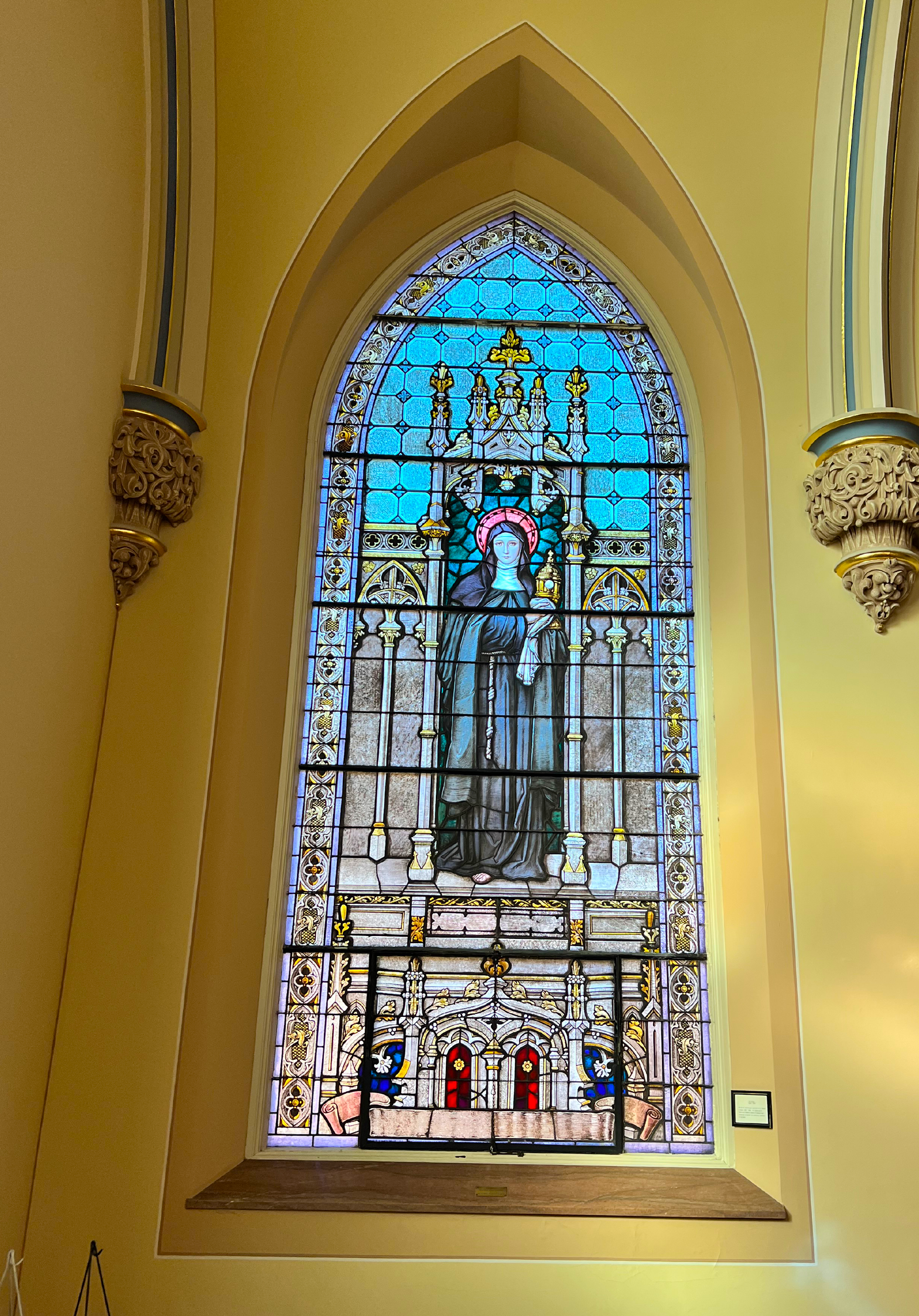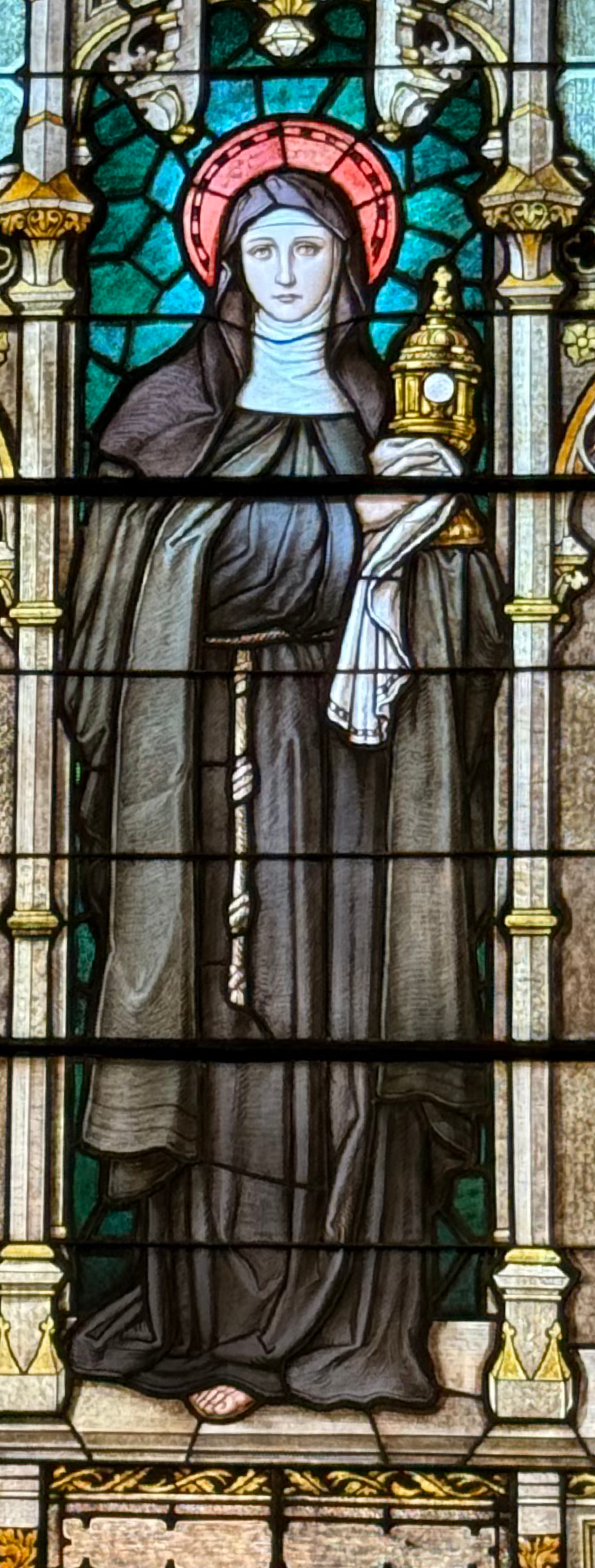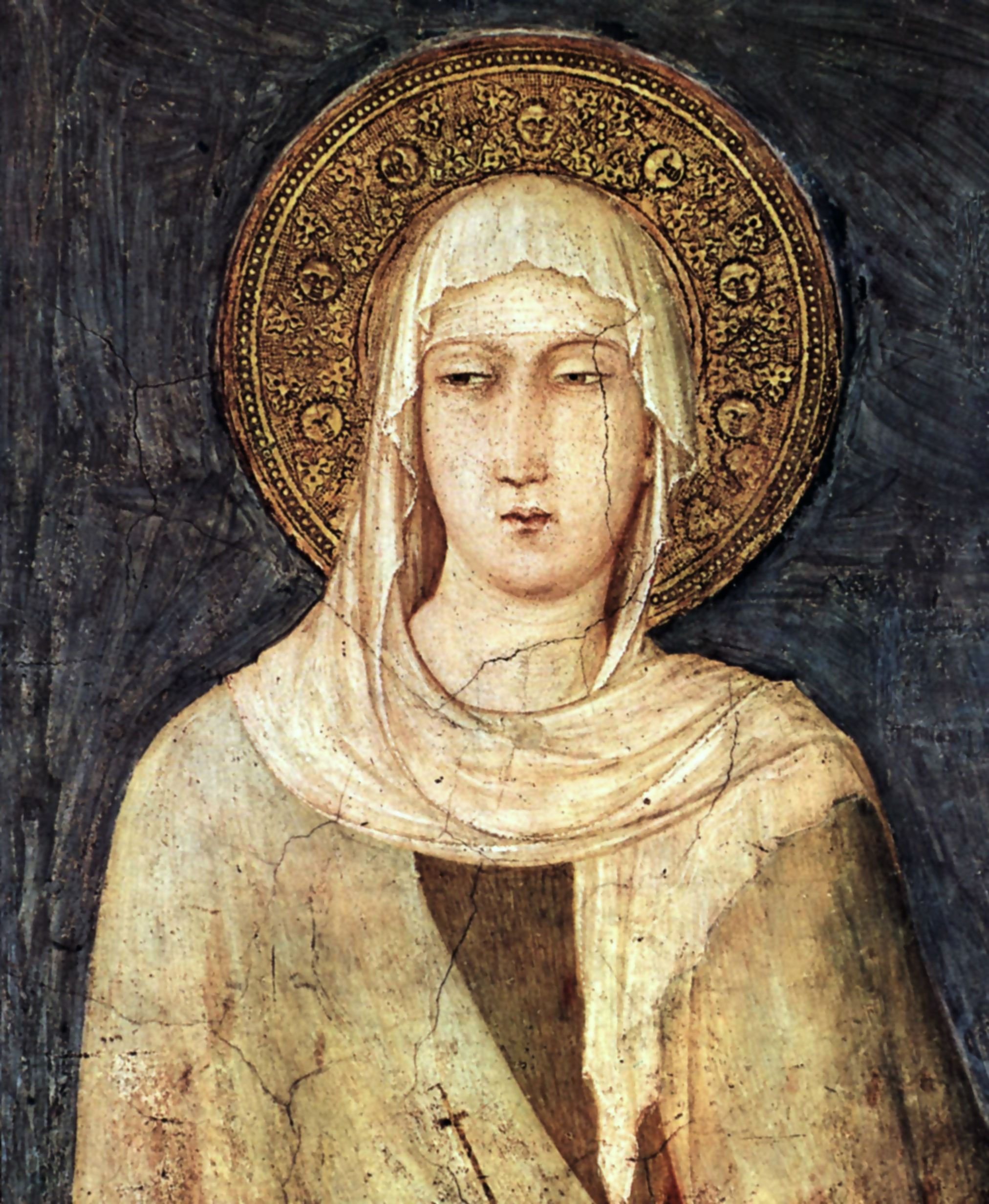
She was the indefatigable associate of St. Francis of Assisi (1181-1226). St. Claire and St. Francis are perennial symbols of generous self-giving and of contempt for comfortable conformity to the world.

Given in honor of the Rev. Martin Brauer by Mr. and Mrs. Robert R. Imse


